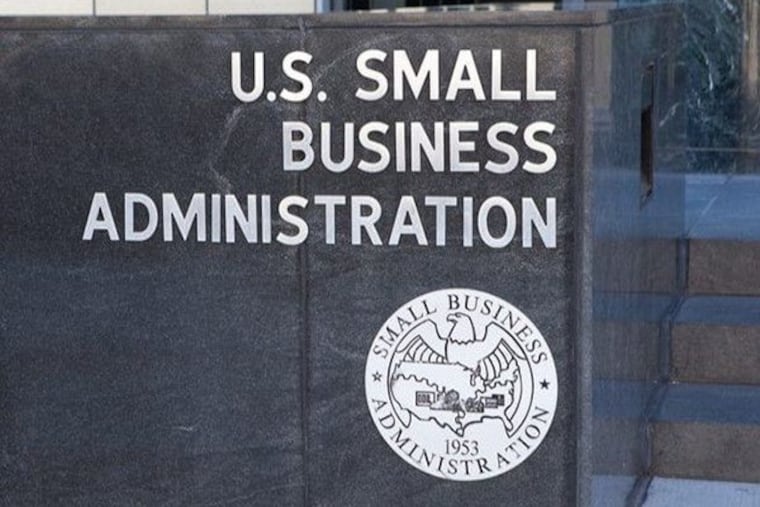3 small business loans you can get, even if you weren’t impacted by the I-95 collapse
SBA offers Economic Injury Disaster Loans directly to businesses and homeowners recovering from a declared disaster, but there are options for other businesses who might need extra financial help.

Last month, the U.S. Small Business Administration (SBA) announced that it would be providing low-interest loans to small businesses impacted by the recent I-95 closure as part of its Economic Injury Disaster Loan Program.
The SBA only offers these Economic Injury Disaster Loans directly to businesses and homeowners recovering from a declared disaster and it’s the only form of financing that’s provided directly through the agency. But there are other financing options the agency offers.
“We’re a small but agile agency and provide very targeted loan programs for small businesses,” said Isabella Casillas Guzman, the SBA’s administrator. “We’re well positioned with our new scale and growth to continue to do that.”
If your small business is looking for financing this year, and having trouble getting funds through traditional lenders or facing very high borrowing costs from others, these are three other SBA loan programs to consider.
Section 7(a) Loans
One of the most popular programs is Section 7(a) loans. Under this program, small businesses can borrow up to $5 million from an SBA-member financial institution to use for working capital, property, equipment, and even to acquire another business. Many banks in the area have designated SBA-lending resources for their customers. Loan terms vary and interest rates are near or a point or two above most banks’ prime rates, which is currently about 8.5%.
504 Loans
Another good option is the 504 Loan Program, which provides long-term fixed-rate financing of as much as $5.5 million that specifically promotes business growth and job creation and is used to improve existing buildings or land; purchase or modernize new facilities, machinery, equipment; or improve streets, utilities, parking lots, and landscaping. These loans generally come through certified development companies in the Philadelphia area. A 504 loan can also be used for up to three projects not to exceed $16.5 million total. However, they cannot be used for working capital or inventory or to repay or refinance existing debt.
Microloans
The SBA also provides up to $50,000 in microloans to eligible small businesses through designated intermediary lenders, which are nonprofit community-based organizations like the Community First Fund and the Enterprise Center in the Philadelphia area. These organizations determine their own credit requirements and terms. These microloans can be used for working capital, machinery, and equipment but cannot be used to pay existing debts or to purchase real estate. The average microloan is about $13,000, according to the SBA.
Eligibility for SBA loans
In general, eligibility for these loans is based on what a business does to receive its income, the character of its ownership, and where the business operates. You must also be operating a for-profit business in the United States, generally have less than 500 employees, attain an acceptable credit rating, be current on any existing debt obligations to the U.S. government and meet other requirements. For the 504 Loan Program a business must have a tangible net worth (assets less liabilities) of less than $15 million and an average net income of less than $5 million after federal income taxes for the two years preceding the application.
Even though there are hoops to jump through, Guzman believes that these programs can be leveraged by most small businesses in the country and are vital now more than ever.
“Over the past few years, we’ve scaled from a $40 billion loan portfolio to more than a trillion dollars,” said Guzman. “Much of this is related to our COVID relief programs, but we’re now focused on helping underserved small businesses, like female-, minority-, and veteran-owned companies with these programs.”
All of these loans are guaranteed by the U.S. government, generally have rates and fees that are comparable to non-guaranteed loans, and also require lower down payments and, in some cases, no collateral. Some loans also come with continued support from SBA counselors to help start-ups.
Potential risks
However, small business owners applying should know that these loans are offered by SBA member financial institutions and other community organizations, and while the government will guarantee the lion’s share of the loan amount, lenders are often still exposed to credit risk. This means that you’re going to need to go through a process similar to any loan application that will require you to provide a business plan, financial information such as tax returns, and other documentation such as key contracts and agreements supporting your business. But assuming you can meet these requirements, the SBA is prepared to make the money available.
“Small businesses generate two-thirds of net new jobs and half of the workers in the private sector,” said Guzman. “There’s still much more opportunity to grow and contribute to our global dominance in the economy, and our agency is committed to meeting those capital and resource gaps that exist because they hold our small businesses back from reaching their full potential.”
Gene Marks is the founder and president of the Marks Group, a small-business consulting firm based in Bala Cynwyd.